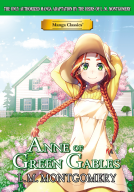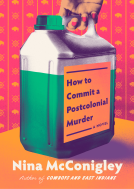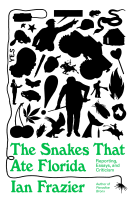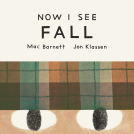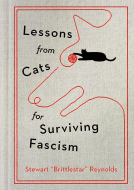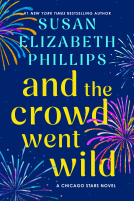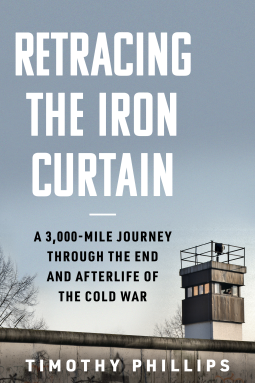
Retracing the Iron Curtain
A 3,000-Mile Journey Through the End and Afterlife of the Cold War
by Dr. Timothy Phillips
This title was previously available on NetGalley and is now archived.
Send NetGalley books directly to your Kindle or Kindle app
1
To read on a Kindle or Kindle app, please add kindle@netgalley.com as an approved email address to receive files in your Amazon account. Click here for step-by-step instructions.
2
Also find your Kindle email address within your Amazon account, and enter it here.
Pub Date Mar 07 2023 | Archive Date Mar 06 2023
Talking about this book? Use #RetracingtheIronCurtain #NetGalley. More hashtag tips!
Description
Initially a victory line where Allies met at the end of World War Two, the Iron Curtain quickly became the front of a new kind of war. It divided Europe from north to south for a staggering forty-five years. Crossing it in either direction was always a political act; in many cases, it was a crime to even talk about doing so. New generations have grown up since these borders came down, freed from the restrictions of the Cold War era. But what has the Iron Curtain left in its wake?
Timothy Phillips travels its full 3,000-mile route—from inside the Arctic Circle to where Armenia meets Azerbaijan and Turkey—to craft this epic new people’s history of a defining 2oth-century conflict. Here, in the borderlands where a powerful clash of civilizations took form in concrete and barbed wire, he uncovers the remarkable stories of everyday people forever imprinted by life in the Curtain’s long shadow.
Some look back on the era with nostalgia, even affection, while others despise it, unable to forgive the decades of hardship their families and nations endured. A director recalls the astonishing night his movie premiered in East Germany—November 9, 1989, the very night the Berlin Wall fell. And a railroad worker recounts the 1951 hijacking of a passenger train from Czechoslovakia that breached the Curtain, granting those aboard immediate asylum in the West. These narratives, by turns harrowing and heartening, paint a vivid portrait of the new Europe that emerged from the ruins. Phillips reveals the Iron Curtain’s profound impact on our world today—even as he punctures the fault lines we draw.
Publisher’s note: This book was published in the UK under the title The Curtain and the Wall.
Available Editions
| EDITION | Other Format |
| ISBN | 9781615199648 |
| PRICE | $30.00 (USD) |
| PAGES | 464 |
Average rating from 9 members
Featured Reviews
 Mike H, Reviewer
Mike H, Reviewer
Retracing the Iron Curtain; A 3,000 Mile Journey Through The End And After Life Of The Cold War by Dr. Timothy Phillips
I have read multiple books about travels along the Iron Curtain. These trips were by bicycle, car, train, walking and in some cases covered the entire length or even the Wall just around Berlin. I found this book to be the most interesting to have read. Why? Mainly because Dr. Phillips focuses on the people who either grew up with the Iron Curtain or are so young, they know of its impact on their parents and grandparents and how this makes them different. Of course, there are many interesting places and historical facts that are covered and many are new to me and I now feel compelled to add them to my “Bucket List” not because of their grandeur but their quirkiness. Two examples: Trieste now part of Italy but was a City State from 1947 to 1954 and the issue was not completely legally resolved until The Treaty of Osimo in 1975. The second is Nakhchivan, Azerbaijan also for many years an Autonomous Region of Azerbejian, a sliver of land bordered by Turkey, Iran and Armenia. Nakhchivan was the first republic to break-away from the Soviet Union, two months before Lithuania.
What really come through is the “Ostalgie” or Nostalgia for the past even when it is remembered with tinted glasses. That somehow losing the security real or imagined provided by big brother is difficult to forget. New to me was also the adaptability locally when the wall was up for certain regions to permit travel back and forth across the Iron Curtain between towns and cities that need resources available on both sides. This was true for example in Norther Finland and the Soviet Union were citizens who lived within 10 miles of each city could travel across the border.
I think there are better books for those who wish to get in a Trabant or bike and travel along the former border using this as a guide book. But if you are seeking to understand what it was like for the people and what they remember from 30 plus years you will find this book well worth the read.
 Ryan W, Reviewer
Ryan W, Reviewer
I appreciate the author going above and beyond with these travel essays. When we think About the Iron Curtain, we mostly associate it with places like East & West Germany, not obscure locations like Slovenia or Azerbaijan. Though one should never discredit the true horrors of the GDR, the latter countries mentioned are where some of the more tragic events occurred during the Cold War, which are dutifully noted here. Present day Putin-Ukraine commentary is provided, which a perfect exposition. So much history presented through the captivating interviews as well. I enjoyed this travelogue.
Thank you NetGalley for providing a free ARC.
 Reviewer 862825
Reviewer 862825
Partially inspired by Winston Churchill's March 5, 1946 Fulton, Missouri speech about the iron curtain descending and locking "all the capitals of the ancient states of Central and Eastern Europe.... from Stettin in the Baltic to Trieste in the Adriatic," (pg 7) Timothy Phillips spent several months traveling along the former Iron Curtain in 2019. Retracing the Iron Curtain: A 3,000-Mile Journey Through the End and Afterlife of the Cold War combines travelogue with interviews and historical research of the various locales Philips traveled through.
The book is arranged into five sections, with each one beginning with maps of the locales traveled. Philips began in Oslo, Norway and then traveled South. At each of these locations he shares what her personally did: travel arrangements, sites visited and any interviews he was able to have with locals, staff of historical institutions and especially those who had living memory of life under or next to the Soviets. This content is then paired with historical research that briefly but succinctly details the areas pre-Soviet, Soviet and post Soviet history. It is the middle period that garners the most attention and Philips is able to speak to the individuals experience and learns and shares of minor seemingly minor moments that had the potential to ignite world war III. As a narrator Philips is also quite clear about his privileged position, noting where others struggle to do what his white face and western passport allow him to do easily.
A fascinating, excellant history of a landscape that seemingly appeared overnight and was thought to last for centuries that instead has reverted to more localized concerns. Portions of the Iron Wall remain, as Phillips notes there were many more than just the one well known Berlin Wall.
 Reviewer 500251
Reviewer 500251
This book is a blend of history and travel memoir. Phillips recounts his journey along the entirety of the Iron Curtain, from the Arctic Circle to Turkey. While on his journey, he meets with citizens who remember their time living under Soviet rule, or adjacent to Soviet controlled areas. Some are nostalgic for the old days, others remember years of hardship, but the lingering effects of life on the Iron Curtain are evident. Each stop is also put in historical context, with a factual recounting of the time spent under Soviet influence and occupation. While the requisite and important Berlin visit was interesting, I enjoyed the insights into less famous locations more. Overall I found the book fascinating and recommend it to anyone looking for an interesting non-fiction read, or for those who are looking for more historical background to the current geopolitical crisis in Ukraine.
I received a copy of this book from the publisher for an honest review.
 Reviewer 588851
Reviewer 588851
Being of Polish heritage, I am always interested in stories about the borderlands of Eastern Europe, about the fall of communism and the sweeping changes in these areas across history. Adding to the recent histories is “Retracing the Iron Curtain: A 3,000-Mile Journey Through the End and Afterlife of the Cold War” by Dr. Timothy Phillips, a collection of travel essays that trace the ”Iron Curtain” that divided east from west for almost 50 years in the past century.
This is part memoir, part history, but mostly travelogue: Dr. Phillips travels the divide, from northern Scandinavia down through Armenia, a 3,000-mile journey by plane, train, boat, car. Along the way we focus on lesser-known areas, places where we see how the implementation of polices from far away are applied to realities on the ground: how mutual interdependence on both sides of the border (like the Finns and Russians) were handled away from the spotlight of places like Berlin. People found ways of dealing with the new realities, and with the collapse of the USSR they had to readjust once again. Not surprisingly, some of the older generation now express nostalgia for the certainty and simpleness of those post-war years, conveniently forgetting about the nuclear threat and the guns pointed at each other.
I found the history that Dr. Phillips shared both interesting and relevant, once again focusing on the stories one doesn’t normally hear. But where this book really stood out were the personal stories, the recollections and reminisces of the people who lived through this era, as well as those who only heard the stories of their parents and grandparents. Some remember it fondly, some recall the horrors and the fears, some just go about their business adjusting as they always had and always will. This is a fine addition to the literature of these often overlooked borderlands.
I requested and received a free advanced electronic copy from The Experiment via NetGalley. Thank you!
A very enjoyable read. Dr. Phillips skillfully intertwines historical narrative with the experiences of people affected by the Iron Curtain while documenting his travels.
Retracing the Iron Curtain is important in understanding barriers and how they are forced on others to separate while at the same time sought to protect and preserve.
 Kennedy P, Librarian
Kennedy P, Librarian
I learned a lot from this book. The Iron Curtain is such an apt analogy that has held up for so long. I think this is a great book for readers of geography, travel, and history. As the war in Ukraine continues, it will be interesting to see the impact on those countries who border Russia and how they've changed-or not-since their Soviet Union days.
Readers who liked this book also liked:
James McBride
General Fiction (Adult), Historical Fiction, Literary Fiction
L.M Montgomery
Children's Fiction, Comics, Graphic Novels, Manga, Teens & YA
Nina McConigley
General Fiction (Adult), Literary Fiction, Multicultural Interest

